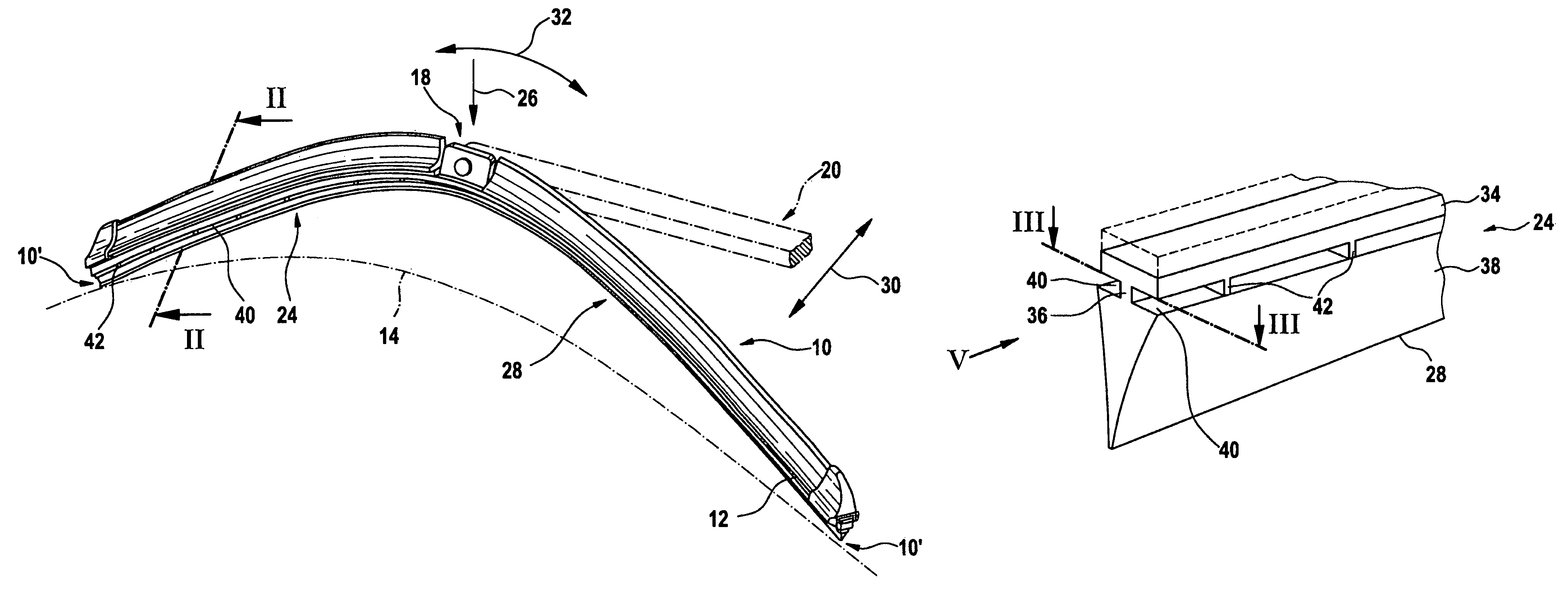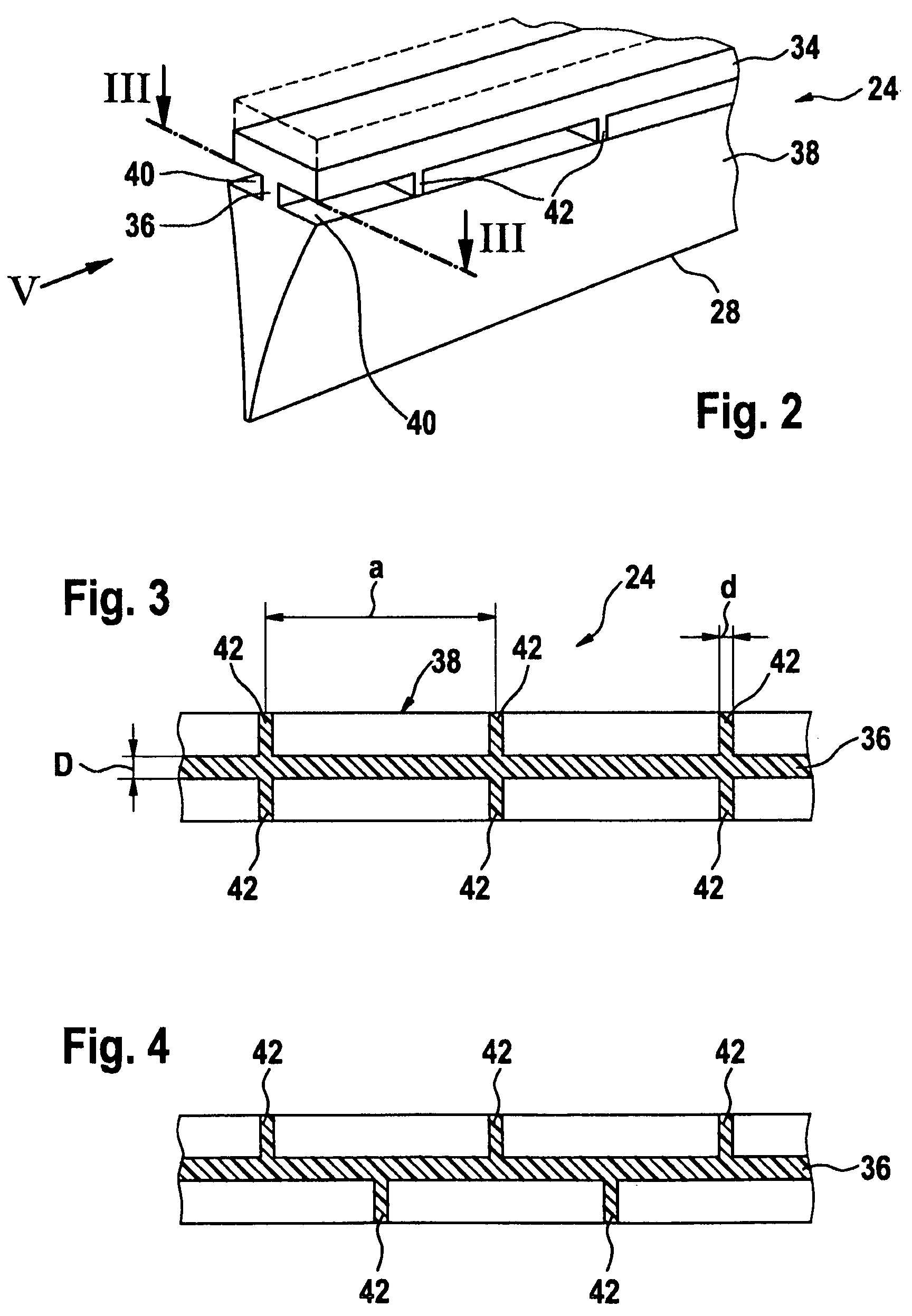Wiper blade
a wiper blade and wiper blade technology, applied in the field of wiper blades, can solve problems such as counteracting any possible resonance, and achieve the effect of preventing the tensile force from becoming too large and favorable for manufacturing
- Summary
- Abstract
- Description
- Claims
- Application Information
AI Technical Summary
Benefits of technology
Problems solved by technology
Method used
Image
Examples
Embodiment Construction
[0023]A wiper blade 10 depicted in FIG. 1 features a band-like, elongated, spring elastic single or multipart supporting element 12, which is curved in the longitudinal direction in an unstressed state. Arranged on the upper or external convex band side 16 (FIGS. 1 and 2) of the supporting element facing away from the to-be-wiped window 14 in the center section of said supporting element is, e.g., a flat, connecting device 18 that is adjacent to said band side. Said connecting device can be used to detachably connect the wiper blade 10 to a driven wiper arm 20 that is guided on the body of a vehicle. An elongated, rubber elastic wiper strip 24 is arranged on the lower or internal concave band surface or band side 22 of the curved supporting element 12 that faces the window and this wiper strip extends longitudinally axially parallel to the supporting element 12. Counter connecting means (not shown in greater detail) are provided on the free end of the wiper arm, and they cooperate w...
PUM
 Login to View More
Login to View More Abstract
Description
Claims
Application Information
 Login to View More
Login to View More - R&D
- Intellectual Property
- Life Sciences
- Materials
- Tech Scout
- Unparalleled Data Quality
- Higher Quality Content
- 60% Fewer Hallucinations
Browse by: Latest US Patents, China's latest patents, Technical Efficacy Thesaurus, Application Domain, Technology Topic, Popular Technical Reports.
© 2025 PatSnap. All rights reserved.Legal|Privacy policy|Modern Slavery Act Transparency Statement|Sitemap|About US| Contact US: help@patsnap.com



